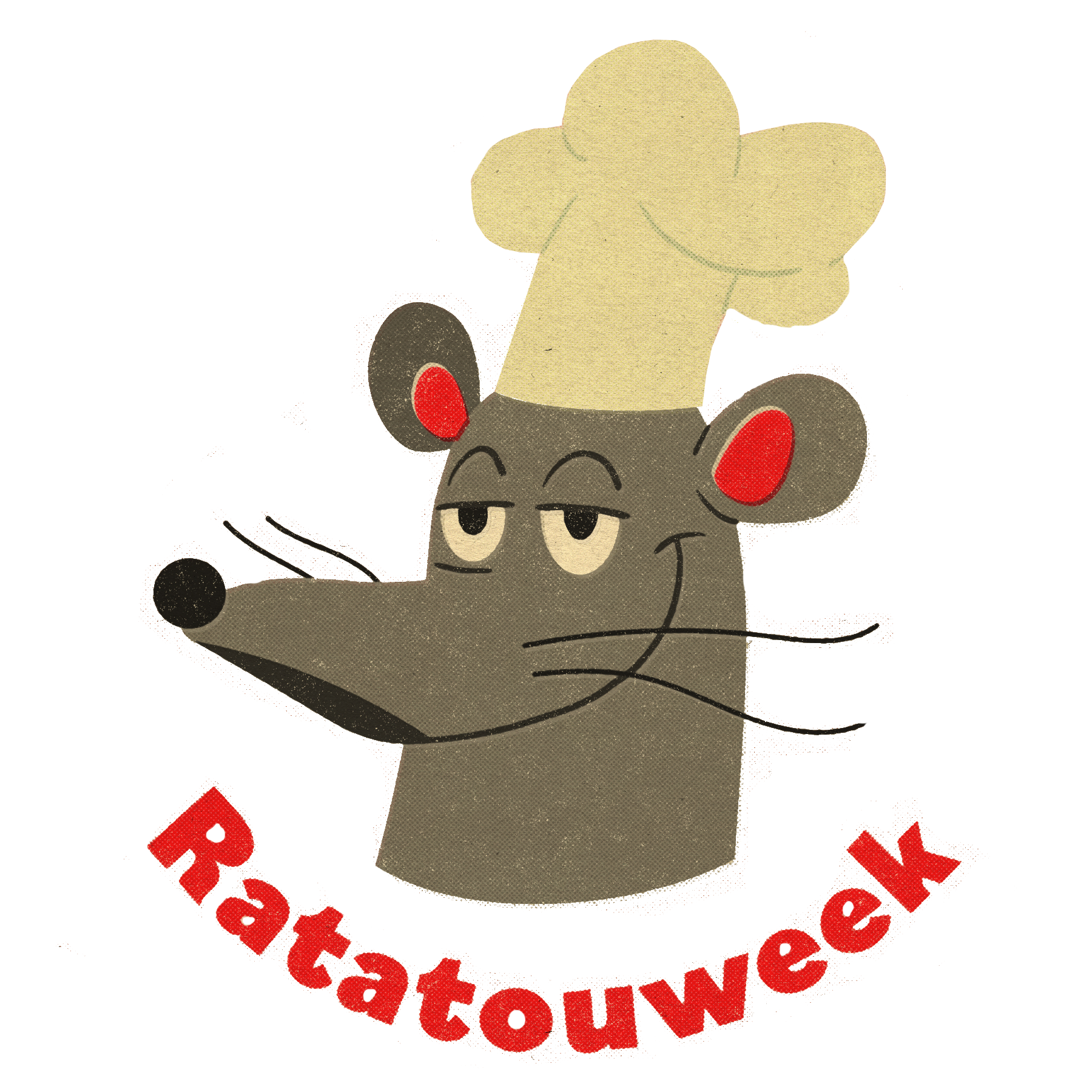
In which an actual rat behaviorist reminds us repeatedly that “Ratatouille” was not a documentary
Because the opening of the Ratatouille ride at Walt Disney World on October 1 is as good a reason as any, here now, a weeklong exploration of the 2007 rat-infested Pixar classic, Ratatouille.
When Walt Disney World officially enters its midlife crisis phase with a blowout 50th anniversary party this October, the parks will celebrate with fireworks, nighttime entertainment, and — what else? — giant rats. Yes, the anthropomorphized rodents made popular in Pixar’s 2007 film Ratatouille will be scurrying their way toward renewed relevance when their all-new themed ride debuts October 1 in the France-themed mini-land within Epcot.
In the movie, Remy, a rat who dreams of becoming a chef, pairs up with Linguini, a bumbling nepotism hire who recently landed a gig at Gusteau’s, a once-heralded French restaurant that has since slipped in the standings. Through some unconventional teamwork, Remy leads Linguini to create the most mouthwatering dishes out of Gusteau’s kitchen in years, all while trying their best to not be discovered.
Beloved for its unusual storyline, quaint absurdity, and winks at the real-life food world of the early 2000s, Ratatouille is the culinary crossover event that, at the time, no one could have expected. It’s also grounded in some truth. Pixar’s animators studied French cuisine and famously worked with consulting chef Thomas Keller at his Yountville eatery, the French Laundry; even the signature dish Remy the rat creates — an elevated ratatouille, plated in spirals — is Keller’s Confit Byladi. (Before it shuttered, a Ratatouille poster hung inside the kitchen at Bouchon Beverly Hills.)
But as Gusteau’s ethos — Anyone can cook! — reverberates throughout the entirety of the film I found myself, just a few days from boarding one of the new ride’s gleeful rodent vehicles, wondering if that applies to actual, real-life vermin. Yeah yeah, it’s an animated movie, but as Ratatouille cements its spot in American culture vis a vis a permanent attraction at the world’s most iconic theme park, it begs the question: If anyone can cook, could a rat?
Some things we can immediately say for sure: Rats are nocturnal — 86 brunch service — and [checks notes] cannot read or write, which would make recipes tricky. But to find out if rats could potentially handle other aspects of running a restaurant I spoke with Kelly Lambert, professor of behavioral neuroscience at the University of Richmond, who recently garnered widespread attention for teaching rats to drive. As a leading scientist in the field and resident rat expert, Lambert was quick to confirm that rats cannot run a restaurant, but I pressed on.
Rats may not be able to cook a beef bourguignon or chateaubriand as easily as humans, but could they at least be trained to sense when meat is done cooking? Turns out ... maybe yes. “Smell is their dominant sensory system,” explains Lambert. “If there was some smell that was associated with when a steak was medium-well, you could train them to press a bar. They could do that better than we could, as far as smell detection of meat doneness.”
The final scenes of the film see Remy’s rat brigade working together to lift a skillet onto a burner, cleanly plate dishes, and tip over a box of mushrooms to fall into a pot. Lambert explained there’s not a lot of evidence that rats are cooperative in work, meaning sous chefs and prep stations are all kaput, but with a little imagination and the right motivation, there are plenty of tasks — like shaking salt into a pot of soup — that might be possible.
“Can rats be trained to do some pretty impressive things? Yes,” says Lambert, with a process called “chaining” that breaks down a larger behavior into multiple smaller behaviors. Let’s say you wanted a rat to complete a set of tasks — walk across a plank, climb up to a high shelf, find a pot, crawl inside, and drop in a sprig of thyme. You’d start with the last task, having them press a button to get a reward at its end, before slowly adding more steps in, one by one, requiring more effort for that same reward, Lambert explains. Difficulty would come by way of both tasks and rewards being food-based, but on a very small scale, it can be done. “They may not know the end goal that they’re trying to season something... but they know ‘If I pick this up and drag this here’ or ‘If I press this lever, I will get a reward.’ We can train them to do that,” she says.
One obstacle that’s trickier to overcome? Which would likely have jolted cartoon critic Anton Ego right back from his transportive mid-bite flashback? Poop. “You would never want a rat in the kitchen because they poop all the time.” Lambert laughs.
Yes, yes, but one other thing to note. In the film, Colette, the lone female chef at Gusteau’s, expounded upon the bias against women in the industry. According to Lambert’s research, however, female rats (mothers, particularly) have shown more cognitive flexibility in experiments at the Lambert Behavioral Neuroscience Laboratory, making them (hypothetically) better equipped to handle the job than even Remy himself. In other words, Colette is overdue for a promotion.
So, no, rodents cannot run a well-regarded French restaurant, cook the perfect omelet, or plate a half-dozen escargot, but give them the right task, the right training, and a little bit of motivation, and well? It seems anyone can cook.
Carlye Wisel is a theme park journalist and expert who reports about things like how Butterbeer was invented and Disney’s secret food lab on her podcast, Very Amusing With Carlye Wisel.
Source : food


Posting Komentar
Posting Komentar